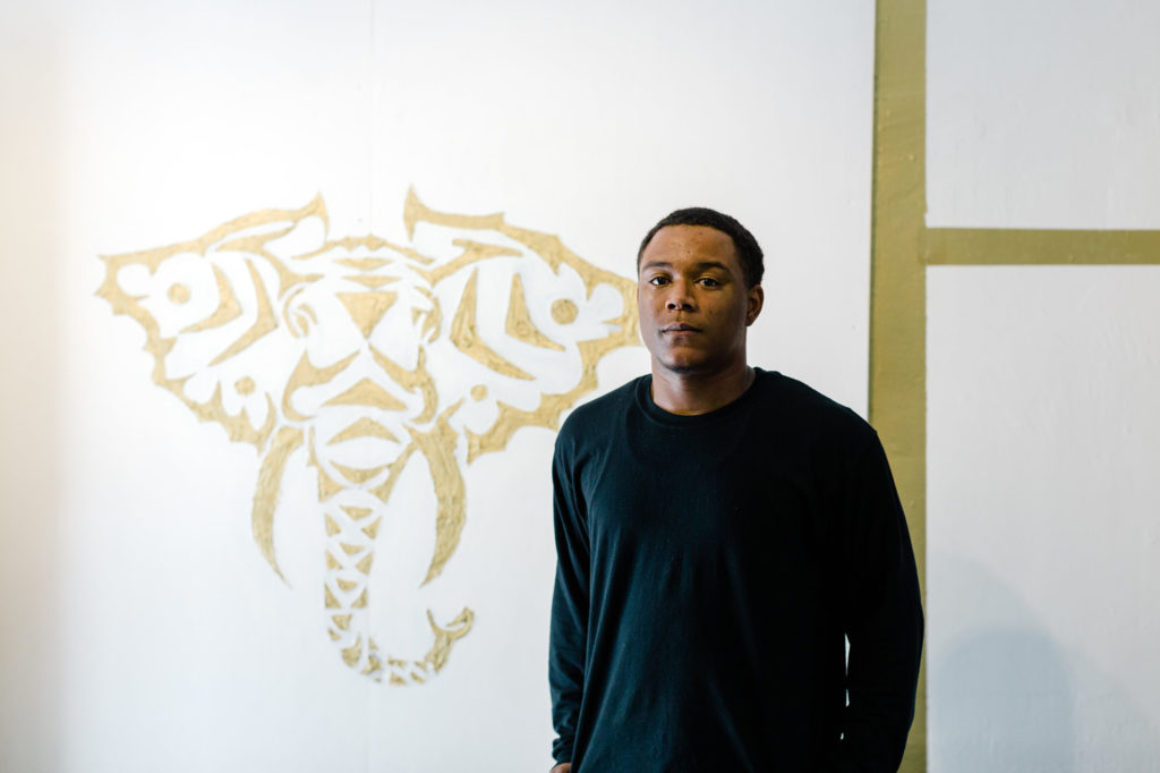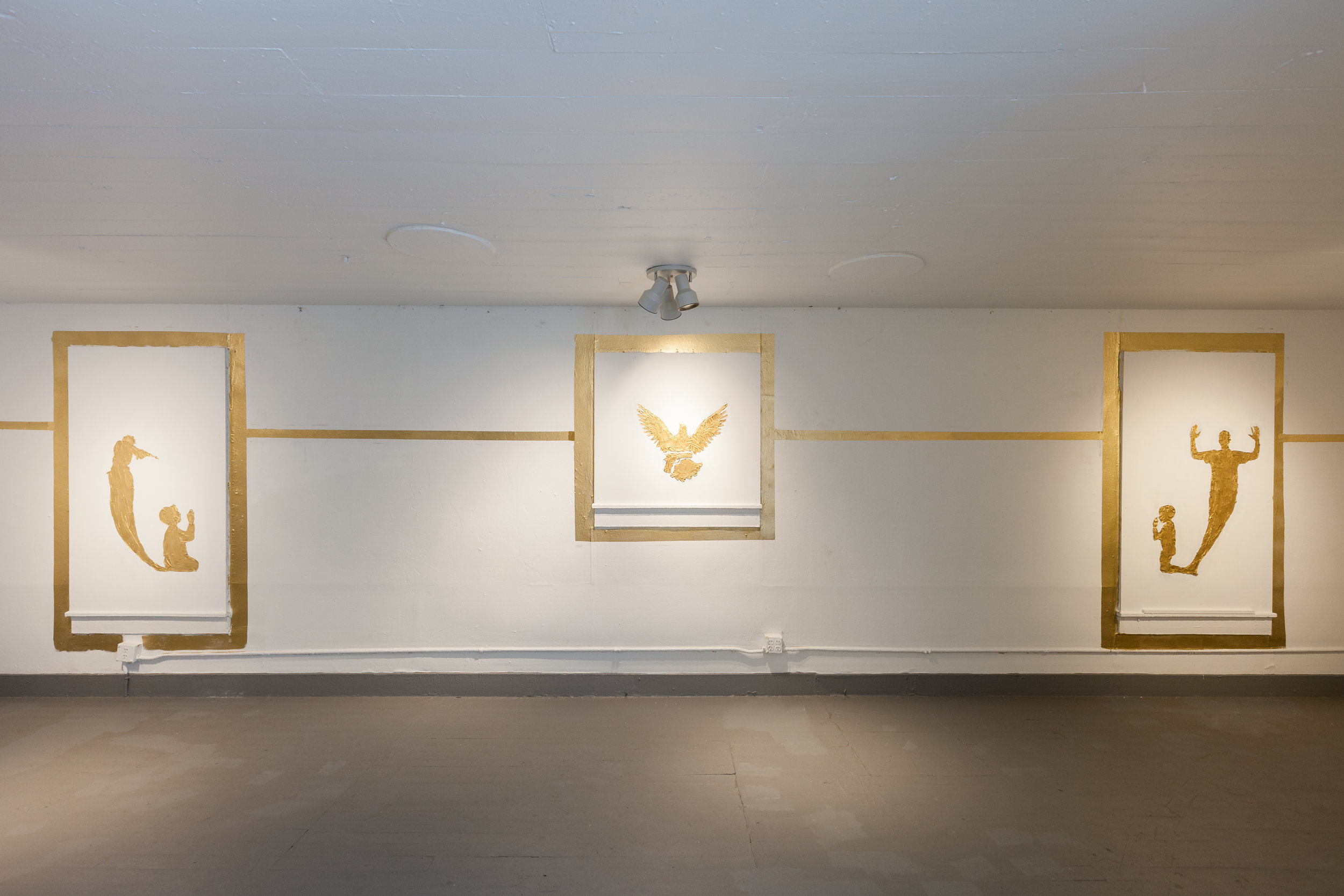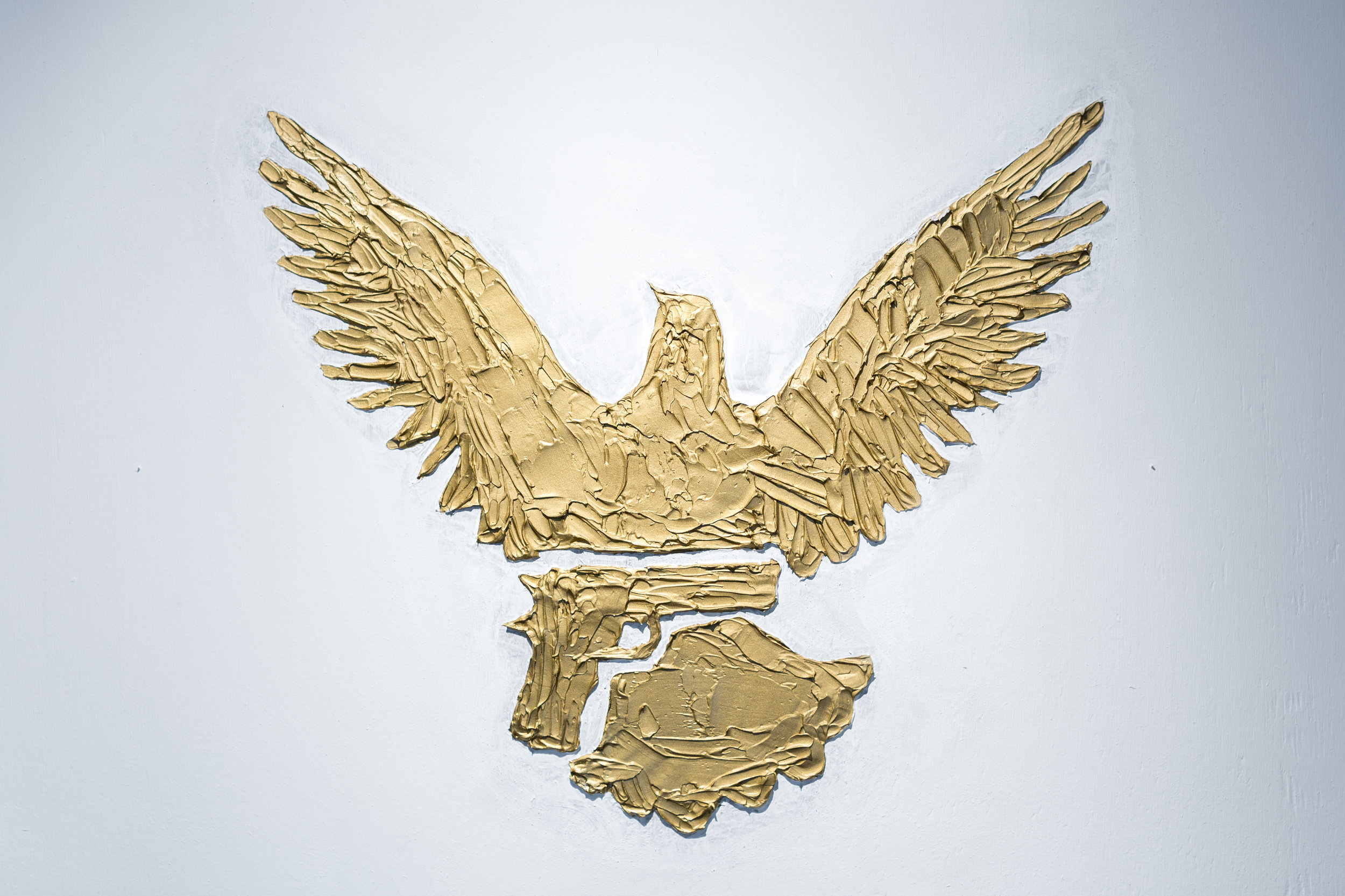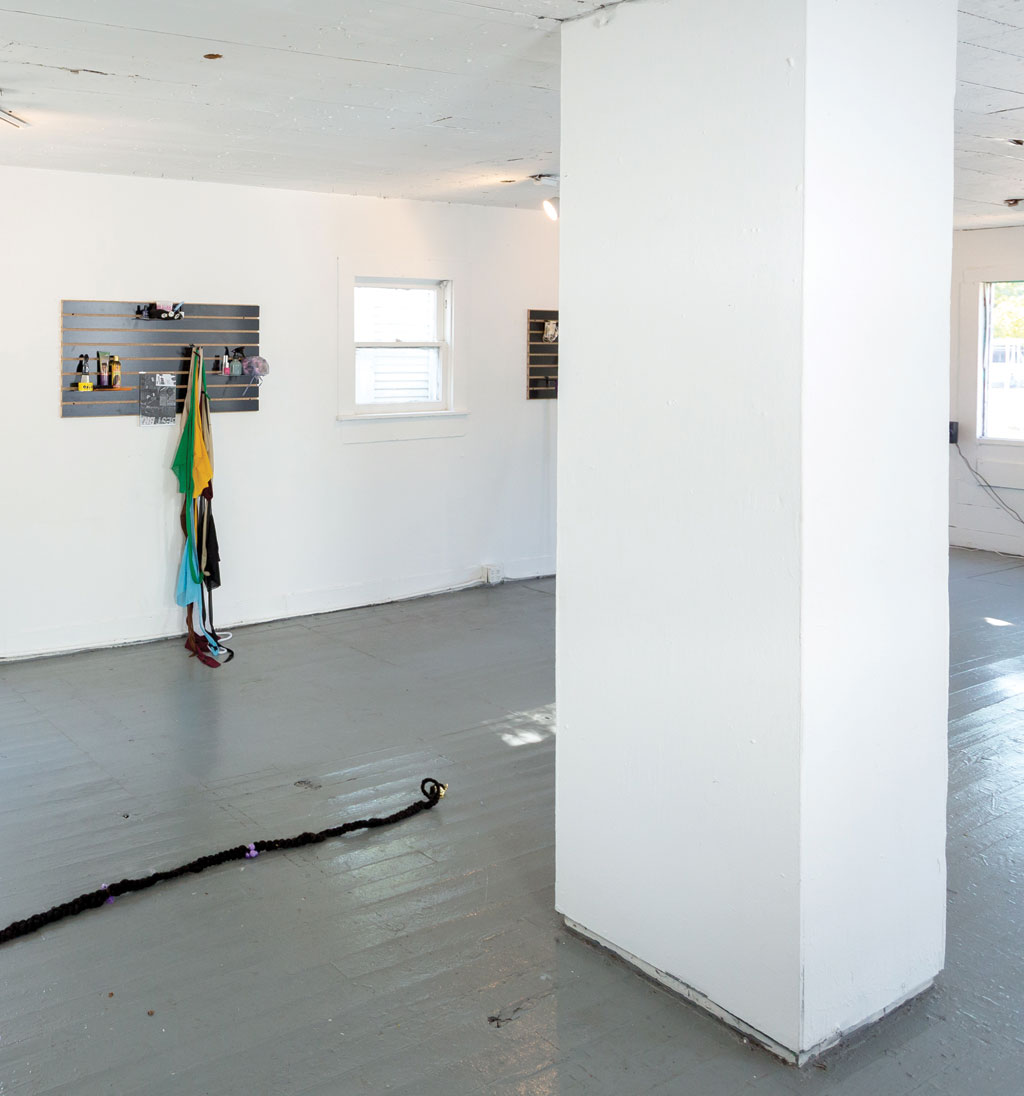Golden Era
Interview by McKenzie Watson
Photos by Alex Barber
LeAirre Morris’s installation Golden Era consists of several large-scale sculptural paintings made of joint compound – a construction material similar to wet cement — and gold spray paint. Each of these grand images are individually striking, and viewed collectively, they tell an evocative narrative about history, power, and justice.
“What made me come up with the process was trying to see how I could do something different, to not be stuck in the same category as everybody else,” he stated. “Something was in my mind about how to do a sculpture on a canvas.”
His quest for individuality in both medium and content led Morris to create the installation visitors will find at Project Row Houses. Joint compound mixed with spray paint has been Morris’s most recent preferred media. His familiarity with the substance came from his experience with construction.
“I’d been using joint compound for other stuff– fixing holes, putting up drywall – and something told me to use it on the canvas,” he recounted. For a while, he played with joint compound as an additive for abstract paintings, until a pivotal trip to the Museum of Fine Arts Houston.
That trip to the Museum was Morris’s first exposure to the work of Kara Walker, who remains his most significant inspiration. It was after seeing Walker’s famous silhouettes that Morris first considered using them in his own work. The inspiration is prevalent in his installation, with Morris putting his own stylistic twist into the silhouettes that fill the walls of the row house.
Prior to the Summer Studios residency, Morris practiced silhouettes in joint compound by rendering faces of celebrities and crafting portraits of friends and family, all on small canvases. The work he produced during his this residency marks a radical expansion on his previous work both in scale and gravity.
Morris recounted that Carrie Schneider and Carol Zou, the Summer Studios mentor artists – as well as PRH-CotA inaugural Fellows – challenged him to experiment with content beyond these portraits. Rather than singular portraits whose only context comes from their iconic familiarity, Morris used his time at PRH to move towards a chronologically-oriented succession of imagery.
“I’ve been working on the narrative side of my artistry,” Morris stated.
Driven by the story of slavery into the present day, Morris created a timeline of sculptural canvases that begin just left of the door and wrap clockwise around the inside of the row house. His narrative starts in Africa, depicted in his installation by an image of an elephant.
“I tried to capture the moment when the slaves were captured and put on the ship,” Morris said, identifying where his narrative begins. The next piece in the chronology is a direct tribute to Kara Walker, Morris’ own rendering of one of her more famous silhouettes.
“That was the first piece that I went to when she had an exhibition at the MFAH,” Morris recalled. “I was like, ‘Whoa, she’s kind of out there.’…When I got over to PRH, I wanted to pay homage to her and to pick the image that was most ‘mine’ in a way. If you were to actually get her silhouette of that piece and put them side-by-side, you can see how my style and her style are totally different.”
Among other stylistic material differences, Morris’s innovative use of joint compound allows Morris’ pieces a texture and depth not present in Walker’s two-dimensional inked silhouettes.
“You can see the markings,” Morris pointed out, regarding his own pieces. “You can even tell if I was frustrated or happy when I started putting in the joint compound. You can tell when I’m at peace with one. When I’m really happy, it’s very smooth.”
After his homage to Kara Walker, the following three pieces, existing in chorus, adorn the eastern wall of the row house. The far left and far right silhouettes are a separated diptych, titled Praying Together: Police Officer and Victim.
In between those haunting silhouettes is a piece titled Dove and Gun, an inversion of the universal symbol of peace: a dove with an olive branch. The dove hovers, suspended in this space, its body partially composed of a silhouetted handgun. Morris shared that during his research for the piece, every image he found of a handgun online showed the gun pointing to the left.
“If you point it the other way,” Morris explained – having painted the handgun pointing to the right – “you don’t see the magazine or the safety.”
While the pieces on the eastern wall serve as archetypes of police violence, the southern wall grounds Morris’ message in the story of Trayvon Martin. “Since I first walked in, I wanted to have a portrait of Trayvon in the house,” Morris stated. “Once I was more focused in the narrative and the storyline of each piece… I asked, how can I do a story, how can I be more symbolic, how can I get the viewer’s attention?”
Humbling the usually-unassailable Lady Justice, Morris depicts her distraught and regretful. “I wanted to make it look like she’s trying to apologize…but he’s not accepting it,” Morris said. This piece, Lady Justice Apology, stands out as one of Morris’ most direct. While Morris is clearly using archetypal representations of abstract systems, his intended message is easily readable in the piece. Morris stated, “Everybody who walked in the house, once they saw the image, they already knew what I was talking about.”
Lady Justice appears again in the final image in the house. Accordingly titled F*cked Over By the System, the image depicts the judge, the police officer, and Lady Justice having sexual intercourse.
“I was trying to make a message about how the justice system is corrupted,” Morris explained. “No matter how much power is in the system, and no matter how much truth is right there in its face, you’re still going to get [screwed] over.”
“I wanted to symbolize how the police overall, they’re not focusing enough on the right part of justice,” Morris stated. “Every morning, waking up and seeing a new kind of video, hearing different stories [of police brutality], I couldn’t help myself… And I actually got lots of different groups discussing and talking about it.”
That kind of audience response has been hugely gratifying to Morris since the exhibition’s opening. “I like seeing people talking about it, whether it’s negative or positive,” Morris reflected. “This is one of the best things I’ve ever done. It actually makes me want to keep pushing.”
His installation will be on view in 2505 Holman until September 17th.
—
Le Airre Morris was born and raised in a small town called LaMarque, TX. As a child, he didn’t focus on art, attempting to fit in and follow in others’ footsteps. During his second semester at College of the Mainland, he enrolled in his first art class, led by Mark Greenwalt, after which he changed his major to Art. He attained his Associates Degree in 2015 and was accepted into Texas Southern University, where he is pursuing a Bachelors Degree in Fine Art. He is also pursuing a teaching license as he works to discover what sets him apart from other artists.






